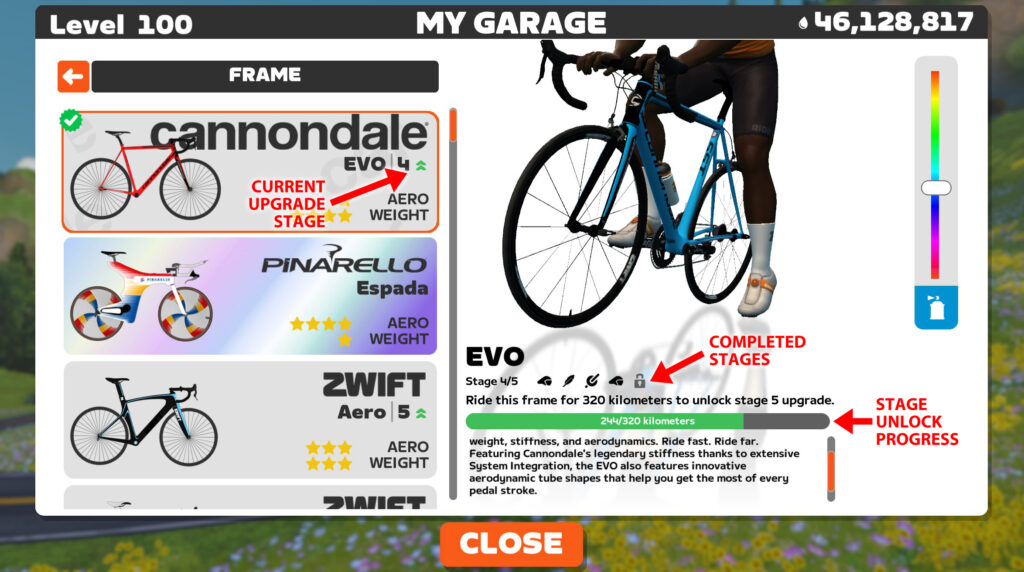This week’s game update included this interesting and intentionally vague note: “We made some improvements to ensure that bike upgrades are unlocked via genuine efforts.”
What’s this about, exactly? Are Zwifters unlocking bike upgrades by less than genuine efforts? How is Zwift trying to stop them? And will these changes actually block the exploits? Let’s dive in…
What’s This About?
Ever since Zwift launched their Bike Upgrades feature in March, a small, squirrelly subset of Zwifters has been gaming the system by teleporting to riders perched on big descents. The Zwifter could then coast downhill, accumulating time or distance towards their next bike upgrade. Wash, rinse, repeat… long, continuous descents like Ventoux or Alpe du Zwift let you accumulate distance or time quickly, with zero effort.
This has become a sort of dirty little secret in the Zwift racing community, which of course is full of riders who really care about the performance of their in-game bikes. There is definitely debate about whether “gaming the game” is ethical. Some riders say, “If the game allows it, it’s allowed,” while others say doing so clearly violates the spirit of the upgrade system.
I’m with the latter group, but I’m also not losing sleep over gamers gaming. After 10 years on Zwift it’s what I’ve come to expect, and preaching about it from an ethics standpoint won’t do much good. The only real solution is for Zwift to block the exploit.
How To Block an Exploit
Zwift is being vague about the measures they put in place to “ensure that bike upgrades are unlocked via genuine efforts.” However, it doesn’t take much thought to figure out what those measures could entail. A few ideas:
- Power threshold: Require an average power of, say, 10W before incrementing distance or time towards an upgrade.
- Elevation threshold: Require your elevation descended to be less than or equal to your elevation climbed before incrementing distance or time towards an upgrade. (Zwift would need to build a bit of wiggle room into this one to account for routes that begin with a short downhill, perhaps saying descended meters must be less than or equal to climbed meters + 100m.)
- Average speed ceiling: No legit rider can average more than ~50kph for very long, yet coasting down Alpe du Zwift you’ll average 70-80kph. Zwift could simply not increment distance or time towards an upgrade once your average ride speed goes over, say, 60kph. Zwift could even make this rule a bit smarter and add power into the equation, dividing your average speed by average power and saying something like “If your average kilometers per hour/watts is higher than X you don’t get credit towards an upgrade”.
- Teleport trigger: To reduce the chance of legitimate activity being flagged, Zwift should only trigger checking the activity with rules like those above after a Zwifter has teleported in their session.
Of course, I don’t know exactly how Zwift is blocking the exploit. But by testing it, perhaps we can begin to get some ideas…
Testing, Testing
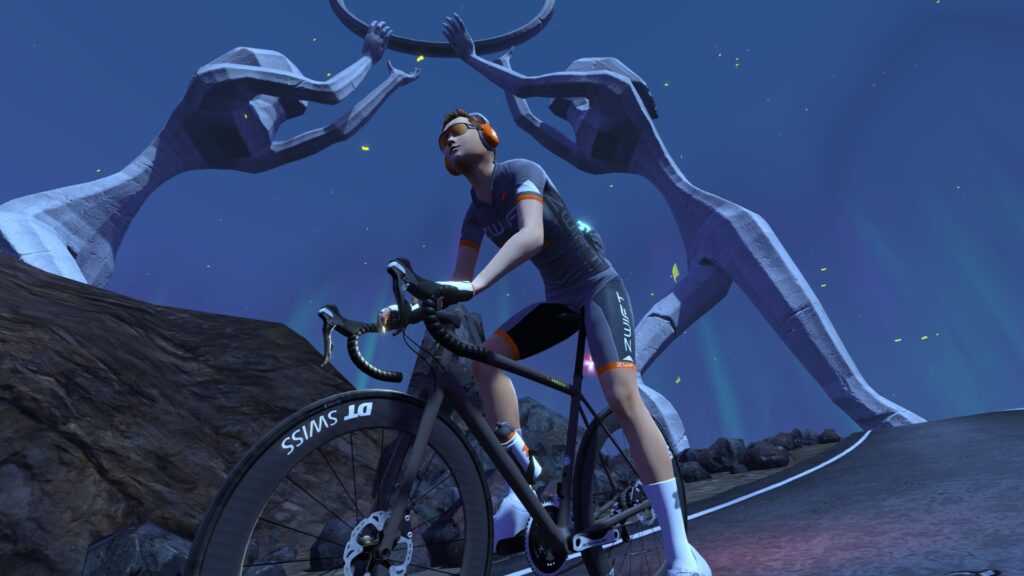
To get some clarity on how Zwift’s anti-exploit measures work, I ran a simple test. I placed a bot atop Alpe du Zwift, facing downhill, then had a second bot teleport to this rider.
The first thing I learned: the rider you teleport to needs to be moving downhill when you teleport to them, otherwise your avatar won’t go anywhere after teleporting until you put some power out to get moving downhill.
Once my “cheater bot” was moving, I kept my eye on the minutes accumulating toward the bot’s road bike upgrade, which requires a certain number of kilometers to be ridden in order to upgrade.
What I found was that only the first 3km of descending counted toward my upgrade. While my avatar actually coasted downhill for ~12km, Zwift has some sort of new limiter built in.

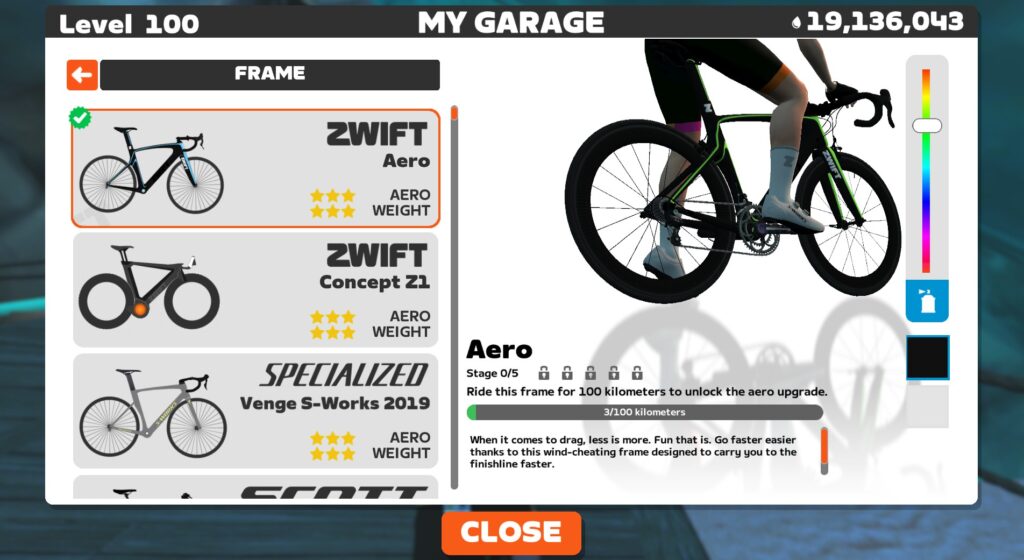
Next, I tried the same with a TT bike, which requires a certain number of minutes to be ridden in order to upgrade. My first attempt was part of the ride activity above, after I descended the Alpe on the Zwift Aero bike. My bot began with 0 minutes logged toward its first upgrade of the TT bike, then coasted all the way down the Alpe, which takes approximately 9 minutes. Afterward I rolled to a stop at the bottom I checked… and we were still stuck at 0 minutes!
Working on the theory that the first teleported descent (with the Zwift Aero) must have triggered some sort of limit which made it so I couldn’t log even a few minutes of descent on my second time down the Alpe, I saved that ride session and started a new one.
Once again I teleported to the top, and descended the full Alpe again with the TT bike. This time, I logged a massive 2 minutes toward 240 needed:
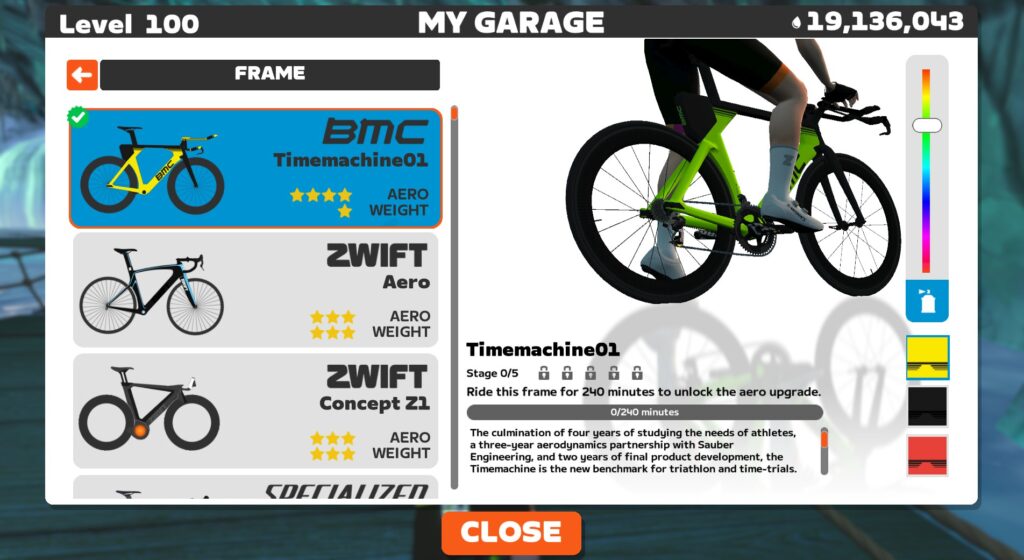
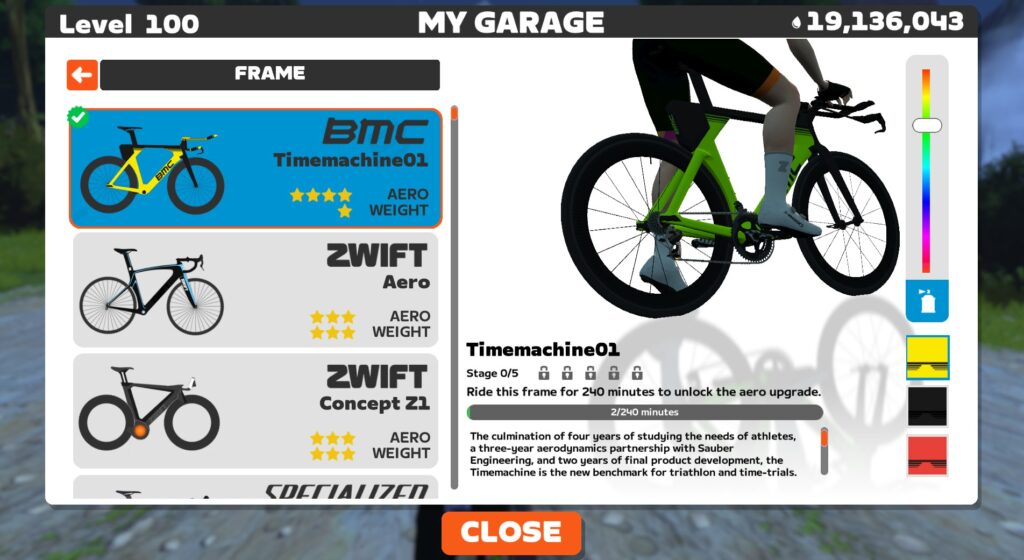
No Takebacks
If you’re a racer who didn’t try to game the system – and actually, if you’re one of those who did – you may be wondering if Zwift is planning on clawing back the bike upgrades that were earned through less than genuine efforts.
Zwift has told me that they don’t plan to retroactively apply these rules. This is in line with how Zwift usually handles these sorts of situations: if Zwifters figure out how to game the system, Zwift may release an update that blocks the exploit, but they don’t go back and change what people unlocked, take away XP/Drops, etc.
Conclusions
These simple tests don’t show exactly what Zwift is doing to limit the exploit, but they do show that the exploit is now greatly limited, at least in the circumstances I tested.
Of course, we can count on Zwifters to push the limits of the system, looking for ways to unlock bike upgrades more easily. I’ll be keeping my ear to the ground to see what they come up with next, but please share below if you hear anything!
